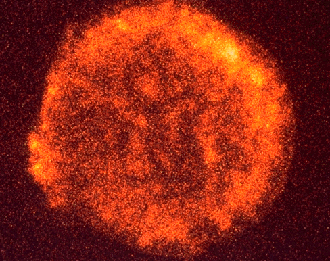
A new method for the search of the gravitational waves emitted by the core-collapse supernova (CCSN) explosions has been proposed by the international team of scientists from Scuola Normale Superiore, University of Rome Tor Vergata, University of Swinburne and Nicolaus Copernicus Astronomical Center, represented by Filip Morawski, PhD student. The work has been published in the Machine Learning Science and Technology.
CCSN explosions belong to one of the most spectacular events in our Universe. They are the source of various heavy elements existing nowadays. Moreover these explosions are so powerful that they can be seen even during the day once the event happen in our galaxy. Unfortunately the CCSNs are hard to study. They are rare phenomenon – only 2-3 explosions occur per century in the Milky Way. Furthermore electromagnetic observations provide only information about the progenitor of the explosion. This information does not explain the ignition of the explosion – Core Collapse process, which happens in the center of the dying star. Since the light can not travel through the surrounding material, the information about the collapsing core is inaccessible for the electromagnetic observations. However this is not the case for gravitational waves since they can escape collapsing core without being scattered or absorbed by the outer layers of the star. Gravitational waves of this type are expected to be detected in the near future by the LIGO and Virgo detectors.
In the mentioned project, authors study state-of-the-art CCSN models from the most recent hydrodynamical simulations of neutrino-driven core-collapse process added to the simulated non-stationary noise of the Virgo interferometer and the planned Einstein Telescope. The novelty of the proposed search method is the application of the convolutional neural network (CNN) combined with an event trigger generator known as Wavelet Detection Filter (WDF). Moreover, authors for the first time in machine learning CCSN studies, considered artifacts (also called glitches) resembling astrophysical signals often found in real data. This way they tested the robustness of proposed method against false alarms created by glitches.
Picture: Tycho's Supernova Remnant in X-ray
Credit: ROSAT, MPE, NASA






